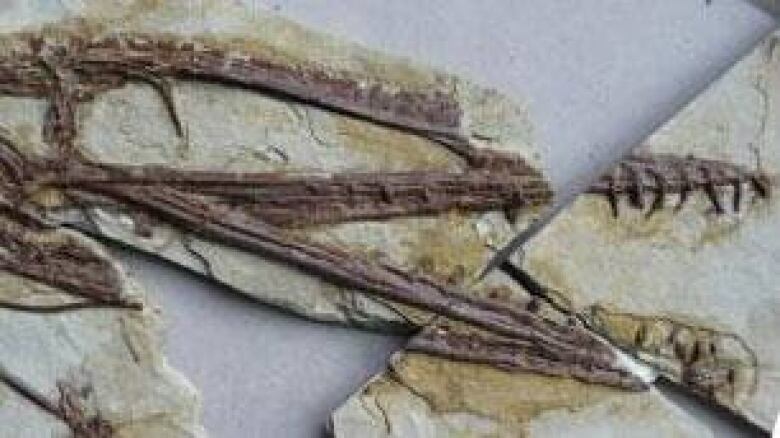New pterosaur named to honour Darwin
A new type of pterosaur has been found in northeast China and it's filling in some of the gaps in the evolutionary record of the extinct flying reptiles.

Darwinopterus, about the size of a crow, had long jaws with rows of sharp, pointy teeth and a long, flexible neck. The researchers said these features could suggest that it was a mid-air predator, catching and eating other flying creatures, such as other pterosaurs, gliding mammals and feathered dinosaurs.
(Pterosaurs, or pterodactyls, are often incorrectly considered dinosaurs, but paleontologists say the flying reptiles are in a different biological group. Modern-day birds trace their lineage back not to pterosaurs, but to feathered dinosaurs.)
Darwinopterus was found in rocks about 160 million years old, placing it at a time between the two known groups of pterosaurs: older, primitive species with long tails and their descendants, short-tailed pterosaurs that reached huge sizes.

"We had always expected a gap-filler with typically intermediate features such as a moderately elongate tail neither long nor short but the strange thing about Darwinopterus is that it has a head and neck just like that of advanced pterosaurs, while the rest of the skeleton, including a very long tail, is identical to that of primitive forms," David Unwin of the University of Leicester saidin a release.
Unwin said the rapid evolution of groups of related features, or modules,seen in Darwinopterus support a controversial theory called modular evolution.
"Whole groups of features that form important structures such as the skull, the neck or the tail seem to have evolved together," Unwin said.
"It seems that natural selection was acting on and changing entire modules and not, as would normally be expected, just on single features such as the shape of the snout or the form of a tooth," he said.
The scientists said more research needs to be done to support the idea of modular evolution, but it could explain instances of rapid evolution seen in both plants and animals, especially in mammals after dinosaurs became extinct.












_(720p).jpg)


 OFFICIAL HD MUSIC VIDEO.jpg)
.jpg)



























































































